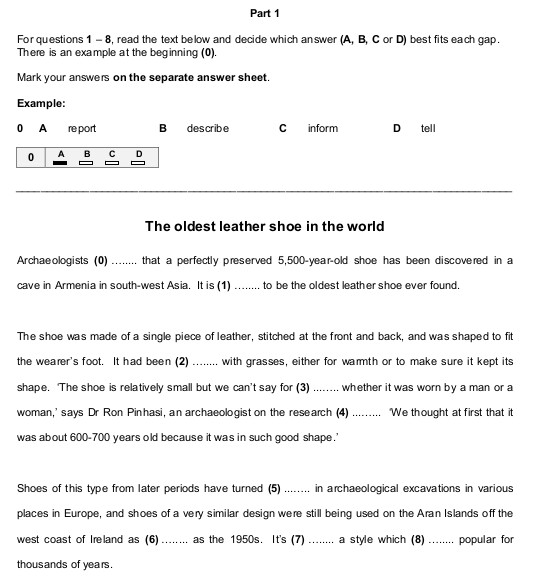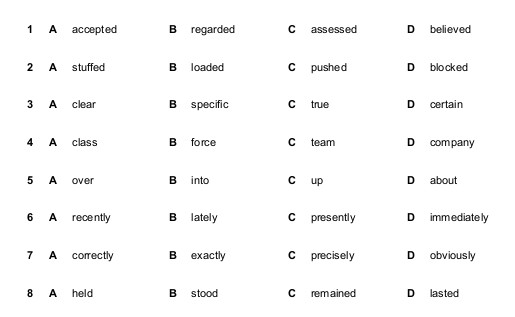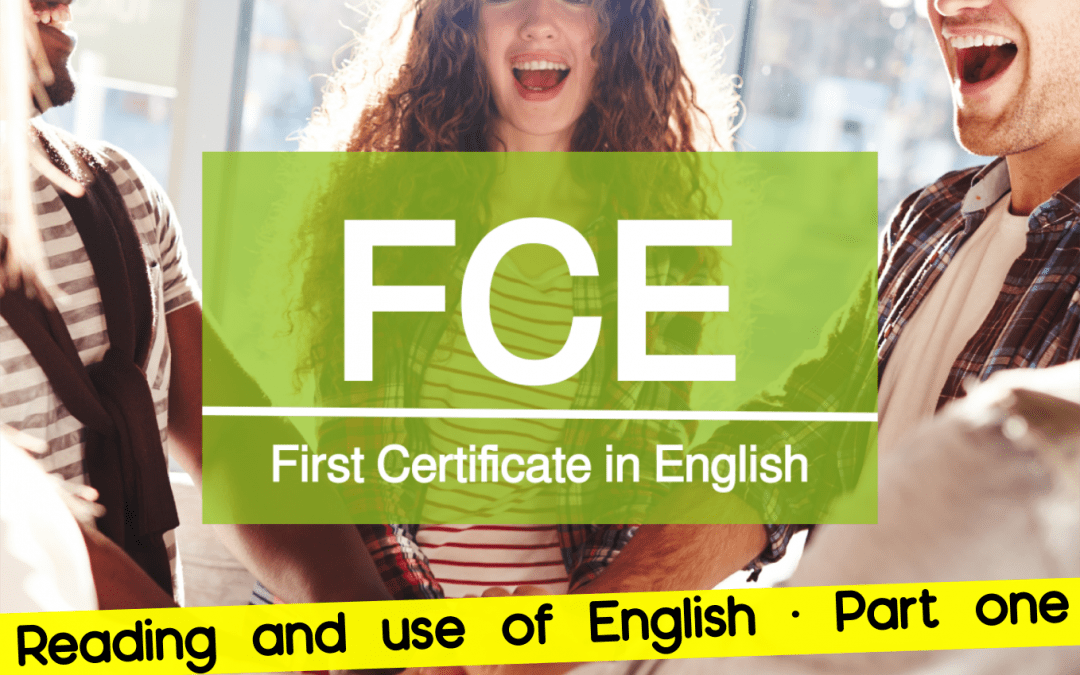Práctica sobre Reading and Use of English part 1
En el último artículo que escribimos sobre el FIRST te contamos los trucos teóricos para superar la primera parte del examen del Reading and Use of English. Hoy los aplicamos con un ejemplo práctico y como es constumbre te lo contamos en inglés y en español. Allá vamos. 😉

Note:
- Each correct answer in Part 1 receives 1 mark.
- Don’t spend more than 6 minutes on doing this part of the exam.
- Look for grammar clues like prepositions and collocations
In the previous article we provide you with some useful guidance and tips on how to do the Use of English Part 1.
Let’s practice with the following sample.


1) ‘Than’ is the keyword. Only one of the choices goes with ‘than’.
A) we say instead of, not instead in.
B) is the correct answer. ‘Rather than’ is the only choice that fits grammatically and logically.
C) except than is wrong. We can only say except for.
D) ‘sooner than’ is a phrase but it doesn’t fit the meaning of the sentence. The writer explains that genealogy is about family history and does not refer to history in general.
2) The preposition ‘in‘ is the keyword here. Even though the four given words are synonyms, only one of the choices goes with ‘in’.
A) we can not use cause followed by in.
B) mean in is wrong.
C) is the correct answer. ‘Result in’ is the only choice that fits grammatically and logically.
D) lead in is wrong, it should be lead to.
3) The keyword is information.
A, C and D don’t make sense with information. B is the correct answer.
4) The keyword is great.
Only D goes with great.D is the correct answer. Great expense means spending a lot of money.
5) In this sentence we need a synonym for observe. Therefore remark (C) is the correct answer.
6) Here we need a synonym for disclose (to make, previously unknown information, known to others).
A is the correct answer.
7) Back is the keyword. We need a synonym for distance before in time.
D is the correct answer.
8) Here the keyword is the preposition in. Only one of the choices goes with ‘in’.
A) We say attend to, not attend in. Also, we attend a course, but not a survey.
B) is the correct answer.
C) Included in is grammatically corrected but not logically, it doesn’t make sense in the sentence.
D) We say associated with, not associated in.
You have the theory, now it’s time to put it into practice! Exercise with the following sample, send us your answers so we can provide you with some feedback.








Nota:
- Cada respuesta correcta en la parte recibe un punto.
- No dediques más de 6 minutos haciendo esta parte del examen.
- Busca pistas gramaticales como preposiciones o colocaciones.
En artículos anteriores os proporcionamos algunas directrices y consejos sobre cómo hacer el apartado de Use of English Part 1.
Vamos a practicar con el siguiente ejemplo.




1) ‘Than’ es la palabra clave. Solo una de las opciones va con ‘than’.
A) Se dice “ instead of”, no “instead in”.
B) Es la respuesta correcta. ‘Rather than’ es la única opción que encaja gramatical y lógicamente.
C) ‘except than’ está mal. Sólo podemos decir ‘except for’.
D) ‘sooner than’ es una expresión pero no encaja con el significado de la frase. El escritor explica que la genealogía trata sobre la historia familiar y que no se refiere a la historia en general.
2) La preposición ‘in‘ es la palabra clave aquí. Aunque las cuatro palabras son sinónimos, solo una de ellas va con ‘in’.
A) No podemos utilizar ‘cause’ seguido de ‘in’.
B) ‘mean in’ es incorrecto.
C) Es la respuesta correcta. ‘Result in’ es la única opción que encaja gramatical y lógicamente.
D) ‘lead in’ está mal, debería ser ‘lead to’.
3) La palabra clave es ‘information’.
A, C y D no tienen sentido con ‘information’.
B es la respuesta correcta.
4) La palabra clave es ‘great’. Solo la opción D encaja con ‘great’.
D es la respuesta correcta. ‘Great expense’ significa gastar mucho dinero.
5) En esta frase necesitamos un sinónimo de ‘observe’. Por lo tanto, ‘remark’ (C) es la respuesta correcta.
6) Aquí necesitamos un sinónimo de ‘disclose (revelar)’ (hacer que información previamente desconocida sea conocida para otros).
A es la respuesta correcta.
7) ‘Back’ es la palabra clave. Necesitamos un sinónimo de ‘distance before in time’.
D es la respuesta correcta.
8) Aquí la palabra clave es la preposición in. Solo una de las opciones va con ‘in’.
A) Se dice ‘attend to’, no ‘attend in’. Además, nosotros asistimos a (attend) un curso, pero no a una encuesta.
B) es la respuesta correcta.
C) ‘Included in’ es gramaticalmente correcta pero no de manera lógica, no tiene sentido en el contexto de la frase..
D) Se dice ‘associated with’, no ‘associated in’.
Ya tienes la teoría, ¡ahora es el momento de ponerlo en práctica! Practica con el siguiente ejemplo, envíanos tus respuestas y así te podremos decir qué tal ha ido.








